Spring is the season of prosperity, all things develop and grow, the essence of heaven and earth changes. Corresponding to the essence of heaven and earth, the essence of the human body also has obvious changes.
Health exercises include: Breathing exercises and movement exercises.
The simplest way is to spend 40-60 minutes a day practicing yoga. When you wake up, start with some yoga stretches, relaxing right in bed for 15-20 minutes. Then, practice deep breathing for 20-40 minutes (if weather conditions permit).
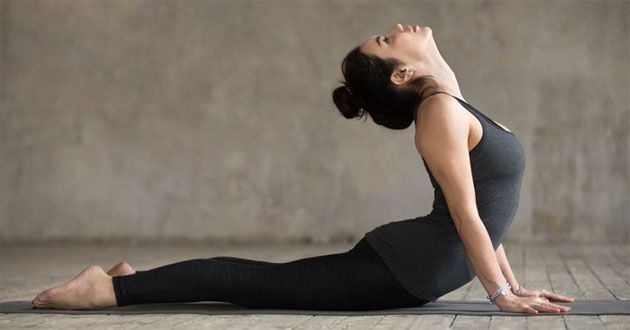
Cobra pose.
1. Practice breathing exercises
Breathing is the expression of life. Breathing is the expression of maintaining life. The body can live for weeks without food, for days without water, but cannot live for more than a few minutes without breathing.
Regular breathing exercises bring good health benefits: Improve breathing, cardiovascular system, digestion, balance hormones, improve sleep quality, sleep better, sleep deeper...; improve thinking, better memory...
Basic breathing exercises have four stages:
- Inhale
- Hold your breath
- Expiratory
- Pause.
Every morning, we can practice breathing:
- Step 1: Exhale through your nose or mouth, using all your abdominal muscles, contract your abdominal muscles, exhale as much as possible, then inhale naturally, without forcing yourself to inhale. Do this for 1 - 2 minutes. This movement helps remove toxins from the lungs and blood.
- Step 2: Take a long, slow breath through your nose. After inhaling, feel your chest expand to the maximum. Swallow hard, then exhale slowly. Practice 12 times, alternating with step 1.
For example: Practice step 2 3-4 times, alternating with step 1 once; after getting used to it, you can practice step 2 6-7 times, alternating with step 1 once. This movement helps absorb and transmit life energy from the air into the body.
- Step 3: Exhale all the air in your lungs, then take a deep breath, then cover your nose with your hand for 3-5 seconds. Use your hand to open your left nostril, keep your right nostril closed, inhale more, when you feel your chest is full of air, exhale slowly, then inhale deeply.
Use your hands to close both nostrils, hold your breath for 3-5 seconds, open the right nostril and exhale, do the same on the left. Breathe at least 12 times, 6 times on each side.
- Step 4: Return your breathing to normal, breathe without effort. Practice 15 - 20 times, then relax your body and finish the exercise.
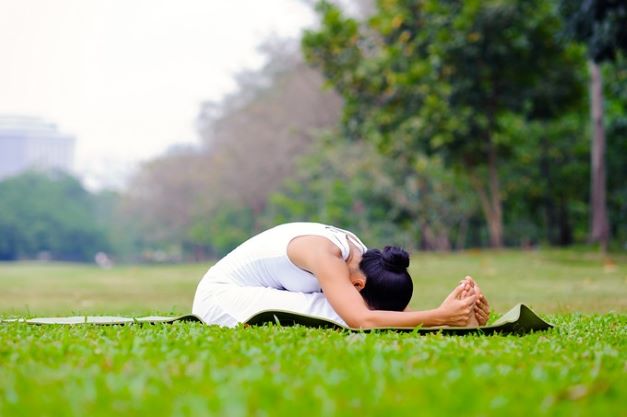
Forward bend pose.
2. Exercise
After finishing the breathing exercise, we will move in the following order: Stretching muscles and ligaments; loosening and relaxing joints.
2.1. Muscle and ligament stretching
Before starting any exercise, we need to warm up our body thoroughly.
- Warm up from head to toe. Start by rotating your neck and shoulders. Next, rotate your arms, elbows, wrists, hips, and ankles. Rotate clockwise and counterclockwise, 10 times each.
- The next step is jogging. Start with jogging in place, without changing position. Then run with your thighs raised, so that your thighs and calves form a 90-degree angle. Finally, run with your heels touching your buttocks, raising your legs so that your heels touch the corresponding buttocks.
- Press vertically and horizontally to stretch all the tendons and muscles of the lower half of the body.
- Open your chest: Raise both arms up, out in front, at eye level, palms facing down (almost like crossing your arms in front of your chest) then raise your arms to the side, turning your palms up. Inhale when raising your arms out, exhale when bringing your arms in.
The purpose of the warm-up is to "warm up" the body. Joint movement gradually increases the heart rate, gradually increases the body temperature, helps blood circulation increase, from there our body will be ready to exercise.
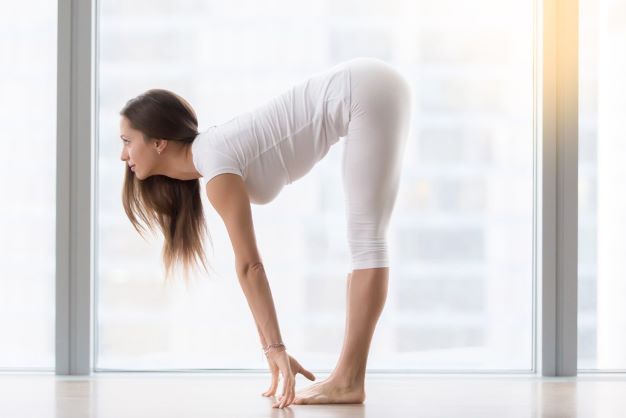
Pendulum action.
2.2. Loosen and relax your joints
Spinal stretch
There are two typical poses: Cobra pose and forward bend pose.
- Cobra pose: Lie face down with your forehead on the floor, palms flat on the floor at shoulder level. Then gradually raise your head, arching your torso until your spine is completely curved.
Note: The correct movement is when the abdomen is still close to the floor, the elbows form an angle > 90 degrees. If the head is too arched and the arms are straight, the posture is incorrect.
- Forward bending posture: Sit on the floor with legs stretched out, slowly bend forward, arms hugging feet. Knees must be straight, if knees are bent, posture is not correct. Effect of exercise: Clear throat, stretch all tendons, muscles, ligaments in the neck; stimulate thyroid gland.
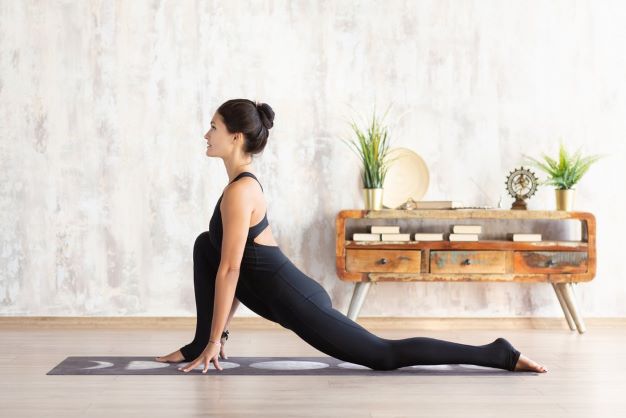
Leg stretch.
Stretch shoulders, arms, neck area
- Pendulum movement: Keep your legs parallel to your shoulders, bend over so that your body forms a 90-degree angle with your legs, relax your head and arms, and swing your arms to the sides like a clock pendulum.
- Shoulder rotation: Relax your arms, rotate your shoulders up, forward, down, back. And do the opposite.
Benefits of the exercise: Helps to relax and activate the cervical and lumbar vertebrae as well as the joints of the shoulders, elbows and wrists, relaxing the entire muscle group of the upper half of the back and both sides of the shoulders. This exercise also stimulates the acupoints running from the spine to the head, from the shoulders down to the arms and hands.
Leg stretch
The leg stretch position is similar to the vertical press, combined with bringing the arms to the side at shoulder level, palms facing down. Then slowly move the arms down, then up. Practice 3-5 times on each leg.
Effect: These movements help stretch the tendons and muscles of the front and outer sides of both thighs, increase strength in the ankles on both sides, improve balance and stimulate the meridians between the pelvis and both legs.
Dr. Lan Anh
Source


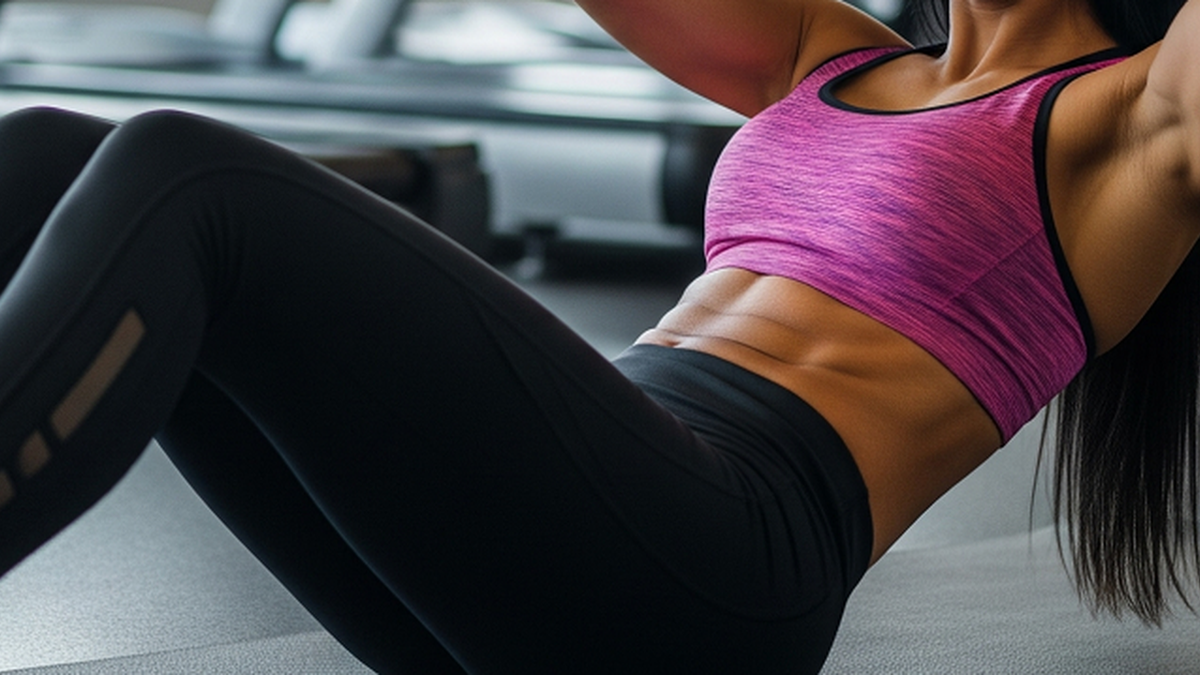




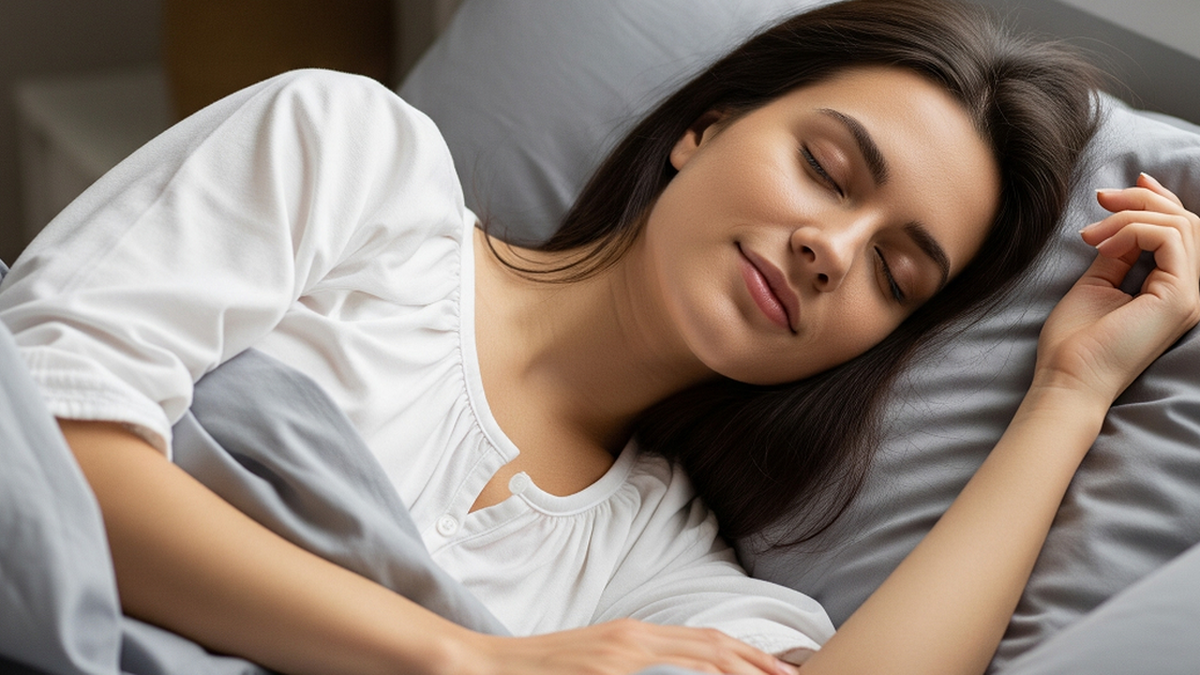



![[Video] More than 100 universities announce tuition fees for the 2025–2026 academic year](https://vphoto.vietnam.vn/thumb/1200x675/vietnam/resource/IMAGE/2025/7/18/7eacdc721552429494cf919b3a65b42e)


















































































![[Infographic] In 2025, 47 products will achieve national OCOP](https://vphoto.vietnam.vn/thumb/402x226/vietnam/resource/IMAGE/2025/7/16/5d672398b0744db3ab920e05db8e5b7d)





Comment (0)